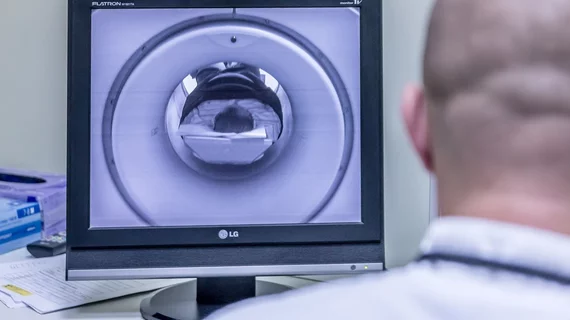Radioactive substances unnecessary in new method for measuring brain glucose metabolism
Researchers have developed a new means of monitoring brain glucose metabolism on MRI without the use of radioactive materials.
Rather than radiolabeled glucose, a glucose solution about equivalent to a can of soda is administered. Since the substance does not produce a signal on MRI, researchers indirectly monitor patients’ glucose metabolism based on decreases in signal intensity.
This method has several advantages in the realm of metabolic imaging, experts involved in the research indicated.
“Impaired glucose metabolism in the brain has been linked to several neurological disorders,” principal investigator Wolfgang Bogner, of the Department of Biomedical Imaging and Image-guided Therapy at MedUni Vienna, and colleagues noted. “Positron emission tomography and carbon-13 magnetic resonance spectroscopic imaging (MRSI) can be used to quantify the metabolism of glucose, but these methods involve exposure to radiation, cannot quantify downstream metabolism, or have poor spatial resolution.”
Another benefit of the method is that it can be applied across multiple MRI devices and vendors, as it does not require additional hardware. For this study, Austria’s only 7-Tesla MRI scanner was utilized, given its ability to offer superior image quality. However, the method’s utility on 3T MR systems has been demonstrated as well.
“That was an important step, because 3T MR systems are extremely widespread in clinical applications,” said Fabian Niess, lead author of a follow-up study that assessed interscanner reproducibility.
Although the initial research was on a small sample size, the team maintains that the benefits of using a glucose solution substitute to map metabolic activity could be widespread if further validated in larger studies.
The initial study abstract is available in Nature Biomedical Engineering, and the follow-up study in Investigative Radiology.

